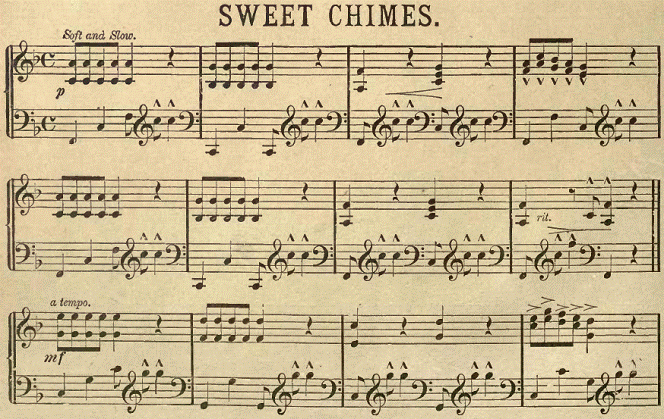How to study piano: scale practice
Each scale should be played until the entire tone-chain appears even like a string of beads, like a succession of balls of the same size. There should be no intermission between any of the tones, nor should one be stronger than the other should. A scale thus played is always pleasing to the ear. In order to produce this effect constant and attentive practice is required.
Tips to study piano scales
Scales must at first be played slowly, so that the student may watch the fingering and the evenness of his touch. If a mistake occurs, it is best for the pupil to begin over again. After the scale has been practiced to a good degree of velocity and evenness of touch, it should be played soft, then loud, then also crescendo or decrescendo.
The main difficulty of scale practice, as has already been stated, lies in the passing of the thumb under the longer fingers and in passing these over the thumb.
“When doing this, the hand may be slightly bent inward or outward, the arm may be moved somewhat from the body, but both arm and hand must be steady. There must be no turning of the hands, as if they were moving on a pivot, there must be no motion of the arms, as if they were wings in motion.
Watch both hands and arms. Always move the thumb under the other fingers just when it is ready to strike, so that there may be no delay or interruption.
As it is considered more difficult to pass the thumb under the longer fingers than to pass these over the thumb, it follows that the ascending scale in the right hand and the descending scale in the left should be especially well drilled.
Listen carefully while you practice scales, the mere running of the fingers over the keys is not intelligent practice.
How to practice scales on piano
Hear each single tone and listen to the whole series of tones as to their smoothness and evenness of strength. Remember the thumb is stronger than either of the other fingers, while the third, and fourth are the weakest. In the use of the one restraint is necessary, in that of the others strength must be increased.
Always strike the keys from the knuckle joints when playing scales, raise the fingers as high as possible, and let them descend perpendicularly upon the middle of the keys.
Thus only will you produce a good clear tone.
Etude to practice scales
In this Etude scales are practiced with the right hand and in one octave only. Play strong and slow. Raise your fingers high. Play first Blow, then fast.

This little piece looks more difficult than it is. Read it over carefully and you will find it easy.
The main lesson is the crossing of the hands. Play slowly and softly, emphasize the notes placed by the left hand, when crossing the right.
Also, bring out the melody given to the right hand to be played. Observe the ritardandos at the close of each part


